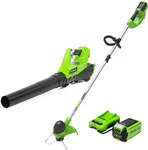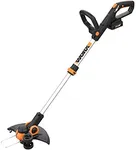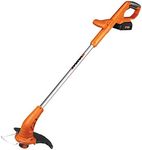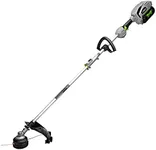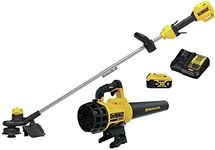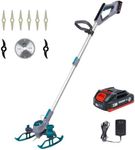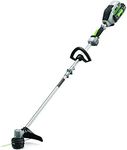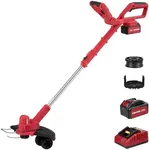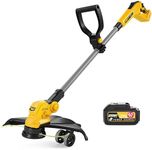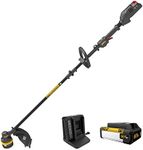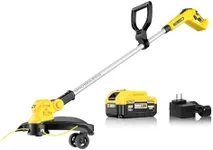Buying Guide for the Best Electric Weed Eaters
Choosing the right electric weed eater can make your yard work much easier and more efficient. Electric weed eaters are a great choice for many homeowners because they are generally lighter, quieter, and easier to maintain than their gas-powered counterparts. When selecting an electric weed eater, it's important to consider several key specifications to ensure you get the best fit for your needs. Here are the most important specs to look at and how to navigate them.Power SourceElectric weed eaters can be either corded or cordless. Corded models are powered by plugging into an electrical outlet, which means they offer continuous power but limit your range to the length of the extension cord. Cordless models run on rechargeable batteries, providing more mobility but limited by battery life. If you have a small to medium-sized yard, a cordless model might be more convenient. For larger areas, a corded model ensures you won't run out of power mid-task.
Battery VoltageFor cordless models, battery voltage is a key spec that indicates the power of the weed eater. Higher voltage batteries (typically 40V and above) provide more power and longer run times, making them suitable for tougher jobs and larger areas. Lower voltage batteries (around 20V) are lighter and sufficient for smaller yards and lighter tasks. Consider the size of your yard and the thickness of the weeds you need to tackle when choosing the battery voltage.
Cutting WidthThe cutting width refers to the diameter of the area the weed eater can cut in a single pass. A larger cutting width (14 inches or more) allows you to cover more ground quickly, which is ideal for larger yards. Smaller cutting widths (10-12 inches) offer more precision and are better suited for smaller areas or detailed work around flower beds and landscaping. Choose a cutting width based on the size and complexity of your yard.
WeightThe weight of the weed eater affects how easy it is to handle and maneuver. Lighter models (under 7 pounds) are easier to use for extended periods and are less tiring, making them a good choice for smaller yards or users who may not have a lot of upper body strength. Heavier models (over 7 pounds) might offer more power and durability but can be more tiring to use. Consider your physical strength and the duration of your typical yard work sessions when evaluating weight.
AdjustabilityAdjustability features, such as telescoping shafts and adjustable handles, can make a weed eater more comfortable to use. These features allow you to customize the tool to your height and preferred working position, reducing strain and improving control. If multiple people will be using the weed eater, or if you have specific ergonomic needs, look for models with good adjustability options.
Line Feed SystemThe line feed system determines how the cutting line is advanced. There are three main types: bump feed, automatic feed, and fixed line. Bump feed systems require you to tap the head on the ground to release more line, offering control but requiring manual effort. Automatic feed systems advance the line automatically, providing convenience but potentially using more line. Fixed line systems use pre-cut lengths of line, which can be easier to replace but less flexible. Choose a line feed system based on your preference for convenience versus control.
